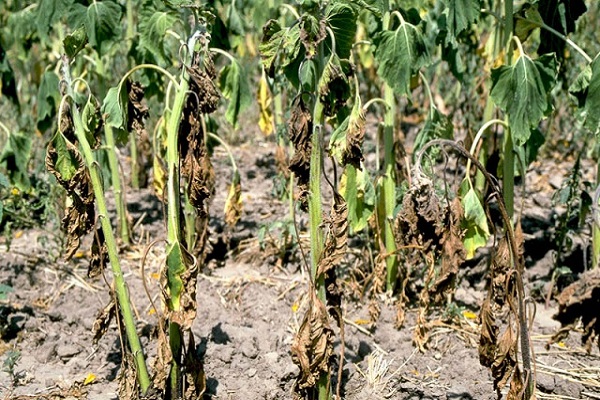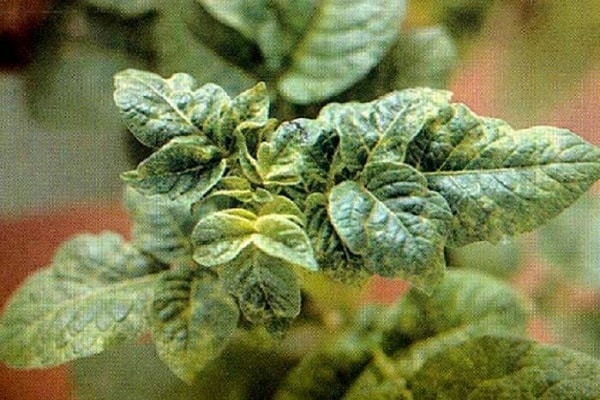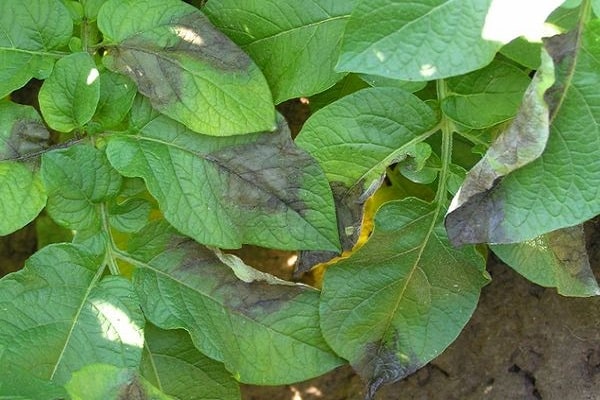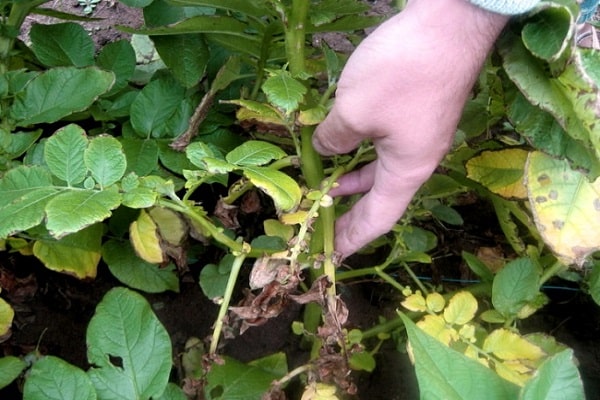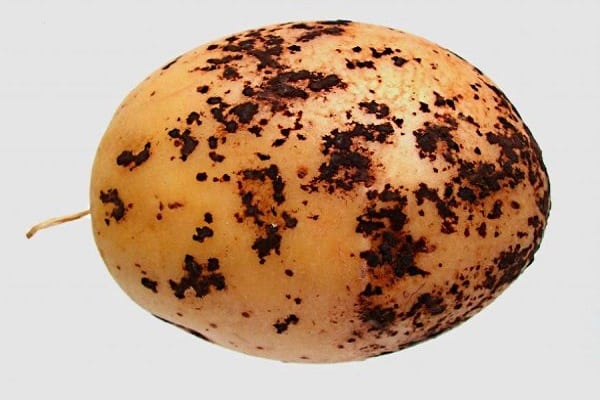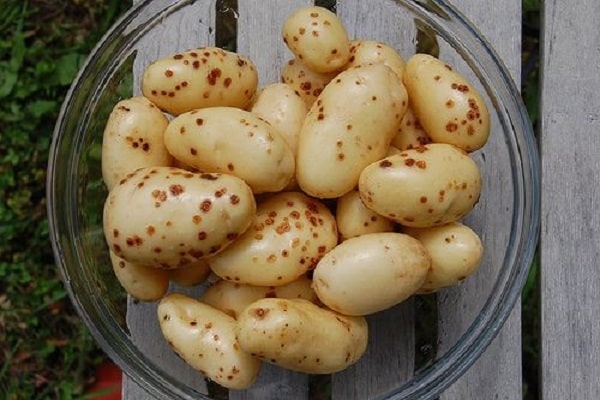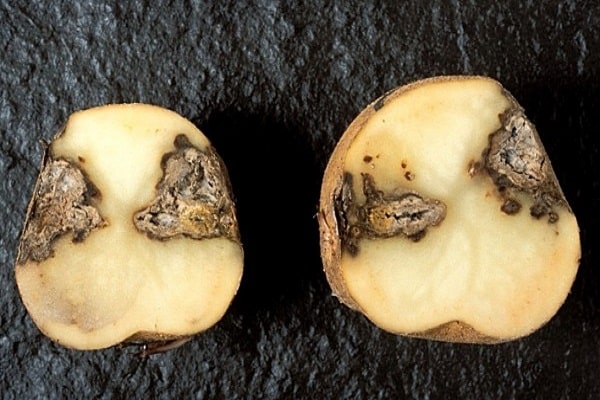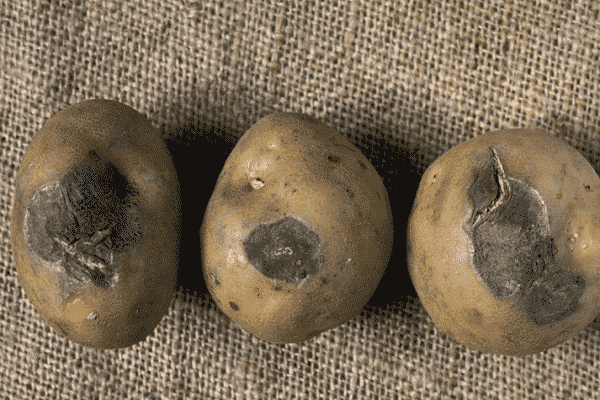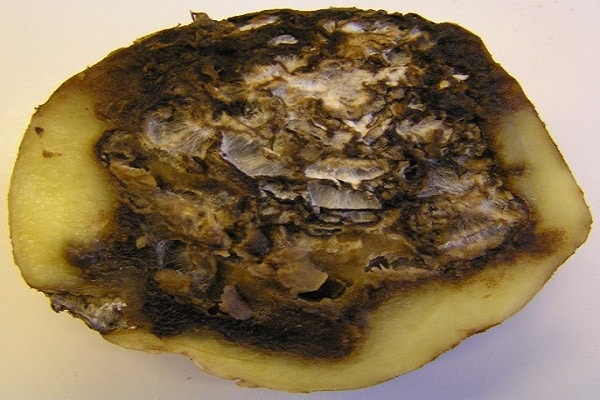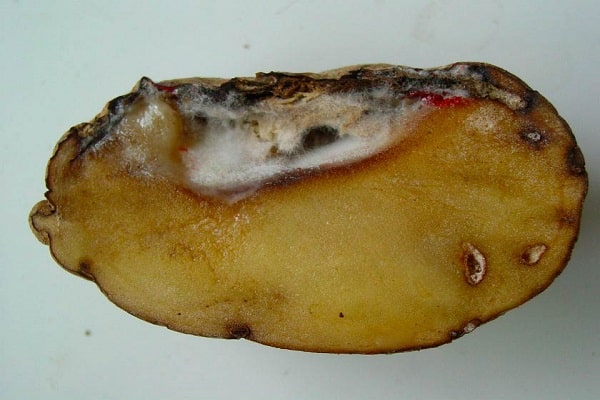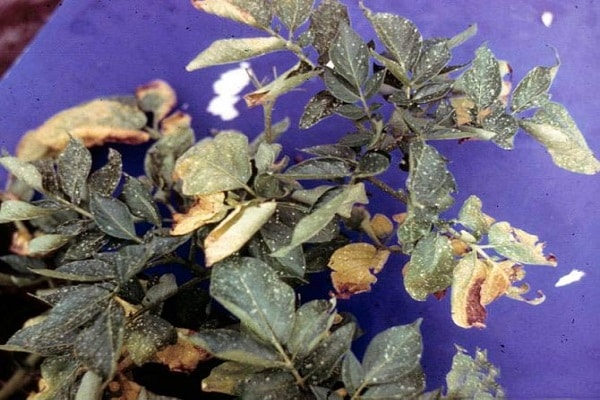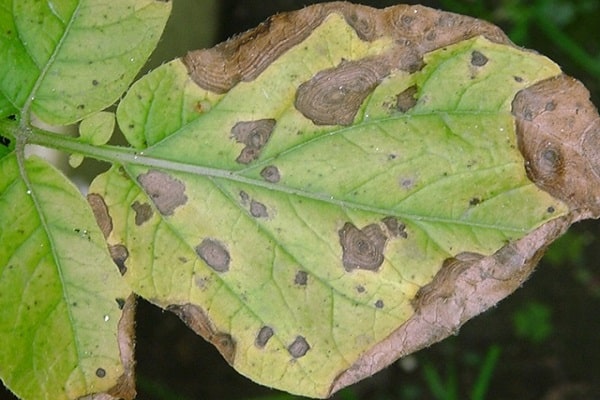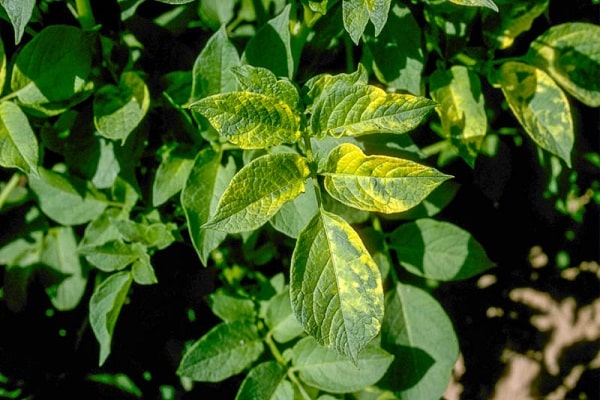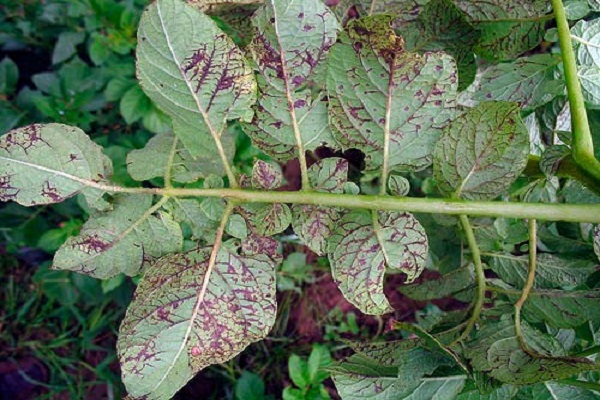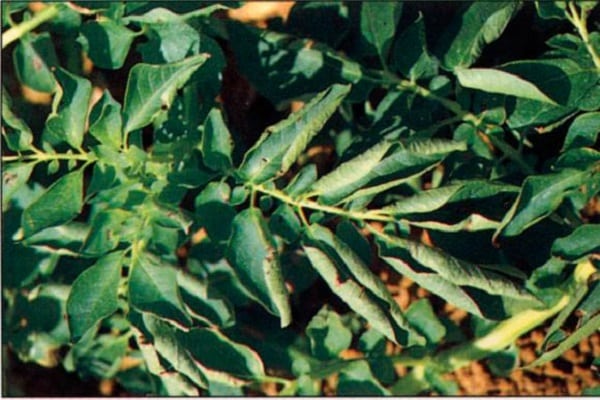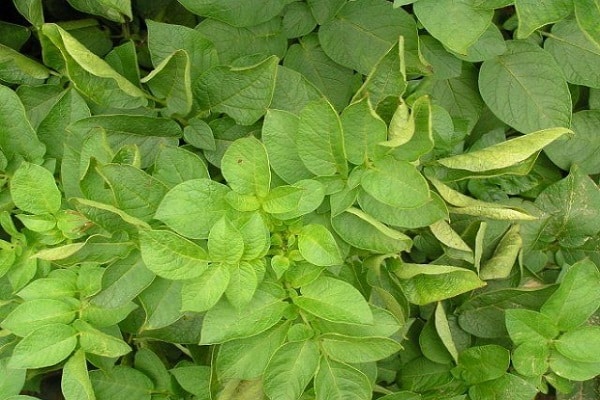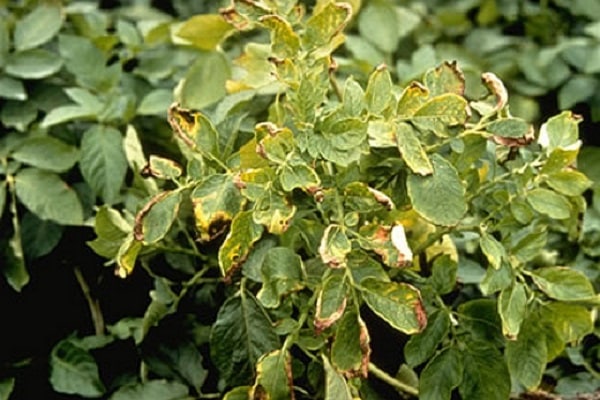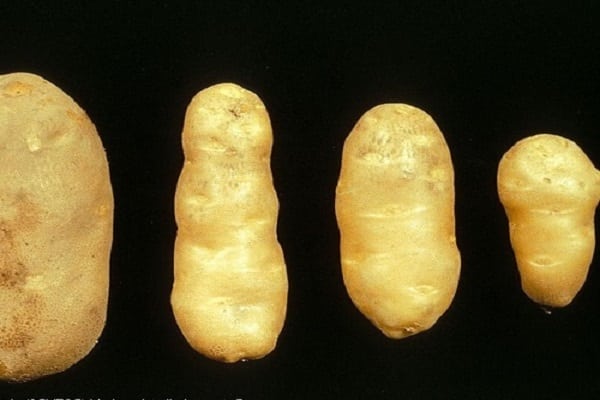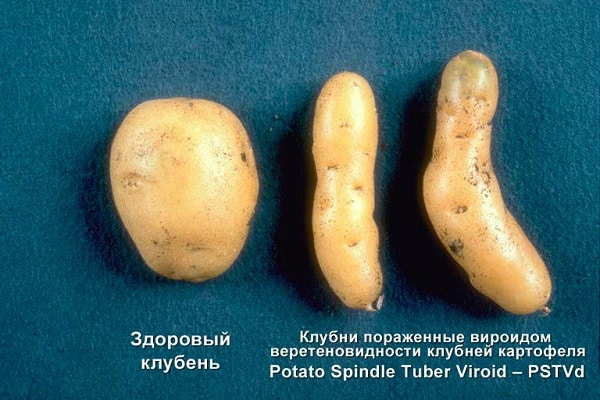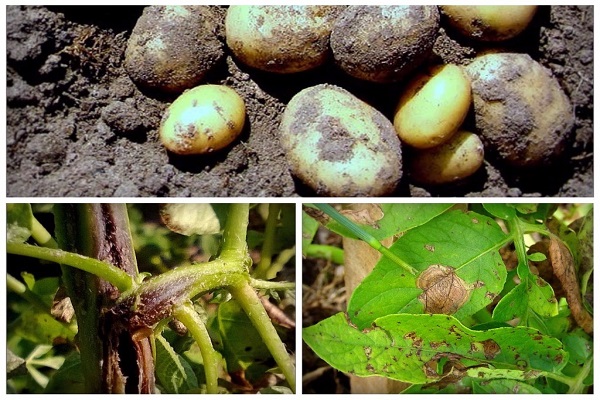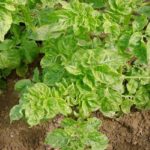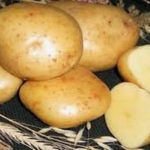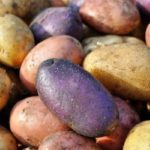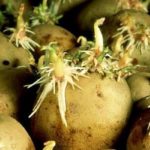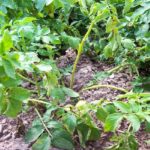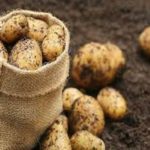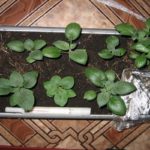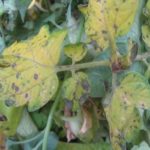Potatoes are one of the most common crops grown in gardeners' summer cottages. Novice vegetable growers think that it is enough to plant this plant and forget about it until harvest. However, without proper care, serious potato diseases can appear, which sometimes lead to the death of the plant.
To cure potato diseases, you need to read the descriptions of some of them and choose the most effective treatment.
Fungal diseases
Potato tops diseases of this type are very dangerous as they can spread harmful spores. Thanks to this, pathogens can be found not only on potatoes, but also on planting material and even equipment. Fungal diseases begin to actively develop in conditions of high temperature and too humid air. There are several common fungal diseases that can appear on potatoes.
Late blight
This disease is considered the most dangerous and widespread. After seedlings are infected with late blight, small spots appear on the stems and tops of potatoes. Most often, this potato disease appears during the growing season, when all the bushes begin to bloom. The most common signs of the disease include:
- brown spots on potato leaves, which may darken in the future;
- the appearance of a small white coating on the inside of the leaves;
- potato tubers begin to gradually become covered with gray spots.
The occurrence of such a potato disease can be prevented using a set of special measures. They will help not only get rid of the source of the fungus, but also improve the immunity of the seedlings. To prevent late blight, you should:
- periodically use potash fertilizers;
- regularly fertilize plants with solutions prepared from copper, manganese and bromine;
- once a week spray potato stems a weak solution of copper sulfate.
If the above measures did not help prevent the occurrence of potato disease, then you will have to treat it. You can treat potato bushes using the following means:
- Bordeaux liquid. To combat the disease, it is recommended to use a 1% solution concentration.To prepare the liquid, you need to mix equal amounts of quicklime and copper sulfate. To treat dark spots, it is necessary to treat seedlings every 10 days.
- Oksikhom. This chemical solution will help quickly cope with late blight. To create a working solution, you need to mix ten liters of water with 50 grams of the substance. The bushes should be treated with the resulting liquid twice a week.
Scab
Another potato disease that gardeners often encounter is black scab. It is quite difficult not to notice this disease, since it has pronounced signs. Almost immediately after plants are infected, black spots form on their tubers. The peculiarity of black scab is that it harms the tubers selected for planting.
Dark spots appear at low air temperatures and high humidity. This is why black scab actively develops in the first half of spring. Due to scab, the tubers grow more slowly and sores gradually appear on them. If no measures are taken, they will rot over time. At the same time, not only the planted tubers rot, but also the root system of young bushes.
Protecting seedlings from this potato tuber disease is not so easy. To do this, you will have to periodically change the place for planting the plant. Also, to prevent the appearance of black scab, it is necessary to plant the tubers correctly. Planting should be done only after the soil has warmed up. Harvesting should also be done on sunny days to avoid high humidity.
Some people don’t know what to do if small dark spots have already appeared. In this case, you will have to use the following means:
- Boric acid.To spray the bushes, use a weak 1% solution. Seedlings should be treated twice a month.
- Ditan M-45. The drug is intended for treating tubers before planting. When preparing the mixture, add 300 grams of the substance to a bucket of water. Then the tubers are soaked for about 10 minutes in the prepared liquid.
Dry rot
In the eastern and southern parts of the country, a disease such as dry rot of potatoes is common. If nothing is done to treat it, half the crop may die because of it. The disease begins to develop after the appearance of a fungus on the tubers, which is initially located in the ground. The disease begins to spread from below and gradually moves upward. First, the root crop rots at the base, and then rot appears on the top of the seedlings. The disease can appear at any stage of potato growth, but most often rot develops during the growing season.
The most common signs of rot include:
- gradual withering of the upper part of the bushes;
- darkening of the lower half of the stem;
- in conditions of high humidity, a coating with an orange tint forms on the bushes;
- The plant's vessels begin to appear on the stems.
Sometimes small grayish spots appear on the surface of potato leaves with dry rot. At the last stages of disease development, cavities form in the tubers where the mycelium is located.
It is impossible to completely cure bushes from dry rot and therefore it is better to think in advance about protecting them from this disease. As a preventative measure, it is recommended to spray all tubers with Fitosporin before planting. They can also be soaked in a solution prepared from the drug Maxim KS. This will help stop the spread of the disease.
Fusarium
Fusarium is one of the most rapidly developing diseases. Fusarium wilt of potatoes can lead to complete death of the bushes five days after the onset of the disease. First, the fungus begins to damage the root system and over time appears on the stems. When a potato suffers from Fusarium blight, its leaves begin to curl and turn yellow. After a few days they dry out completely and fall off. In parallel with this, black dots appear on the stems, which indicate the spread of rot.
It is impossible to completely get rid of fusarium and therefore everything must be done to protect plants from it. To do this, the potatoes should be greened, during which the tubers should be kept in the light for about 15 days. They can also be treated with boric acid or copper sulfate.
Verticillium
Quite often during the growing season, verticillium wilt appears in potatoes. It is quite simple to distinguish wilt from other diseases. After infection, some leaf lobes from below begin to gradually turn yellow. Over time, their surface becomes covered with light spots. In summer, due to verticillium, a pinkish coating may appear on the leaves. Within a week, the potato stems become covered with small dark spots, and the plant gradually begins to dry out.
To prevent verticillium wilt, you need to feed the plants with potassium and phosphorus. Experienced gardeners also recommend periodically fertilizing the soil with wood ash to increase the immunity of seedlings.
Anthracnose
Potato anthracnose is a serious fungal disease that quickly spreads to neighboring plants. This is facilitated by rain, wind and even insects. Most often, bushes that have previously suffered from mechanical damage suffer from anthracnose.The main sources of the disease are the remains of infected seedlings and infected seeds.
The ways to combat the disease are very simple. Since it is impossible to cure an already infected plant, you will have to take care of protecting healthy bushes. To do this, you need to get rid of all seedlings with anthracnose so that it does not spread to neighboring bushes. Then all the potatoes are sprayed with a copper solution prepared from 10 liters of water and 50 grams of the substance.
Viral diseases
Viral diseases of potatoes are more common than fungal ones. After the appearance of such diseases, the tops begin to deform and change color. Also, the emergence of viral potato diseases significantly slows down the growth of grown seedlings. Diseases of this type are dangerous because they do not manifest themselves in the initial stages of development. To protect potatoes from viral infections, you need to familiarize yourself with the most well-known of them in advance.
Striped mosaic
Plants suffering from banded stem mosaic are easily distinguished from healthy bushes. Small brown spots or stripes may be seen on the leaves of infected seedlings. Also, such stripes appear on the back of the sheets. Because of this, the leaves become fragile and quickly fall off. At the last stage of development of the banded mosaic, dark rings can be seen gradually appearing on the tubers.
The appearance of this disease can be caused by aphids and therefore it is necessary to protect plants from these pests. For protection, you can use a soap solution, which is prepared from 10 liters of water and 250 grams of laundry soap.
Twisting
Potatoes with curled leaves must be treated so that they do not die. The main reason why this disease appears is the virus found in the planting material.Sometimes leaf curl is caused by pests such as bugs or aphids. The disease spreads rapidly at high temperatures of the ground and air. Also, its development can accelerate in the absence of watering during periods of drying out of the soil. If you do not take any measures to combat the problem, then some of the bushes may rot and because of this, the yield will seriously deteriorate.
Before dealing with rotten and curled leaves, you need to familiarize yourself with the main signs of the disease. These include:
- white coating on most of the upper leaves;
- curling of the lower leaves at the initial stage of development of the disease and gradual deformation of the leaves on top;
- the tops begin to turn yellow, and its back side becomes covered with a bloom with a pink tint;
- the leaf plate becomes more fragile and breaks even with the slightest contact.
Plants become infected with curling disease rather slowly. Sometimes this process drags on for several months. If potato bushes become infected with this infection, they cannot be cured. The only thing that can be done with them is to completely remove them from the area and burn them.
Phytoplasmosis
Phytoplasmosis or stolbur often affects vegetable crops such as eggplants, potatoes, tomatoes and peppers. After the potato column appears, the growth of the bushes slows down several times, their leaves become smaller and gradually dry out. Over time, black-gray dots appear on the leaves. Two weeks after infection, a lot of anthocyanin accumulates in the leaves and because of this they turn purple. In the pictures depicting plants with phytoplasmosis you can see all these changes.
To get rid of phytoplasmosis, many recommend immediately burning all infected plants.However, before this you should try to cure them with a solution prepared from karbofos. To create it, you need to mix 40 grams of the substance in a ten-liter container with water. You need to spray the bushes twice a week.
Gothic
Gothic tubers, like many other diseases caused by viral infections, are accompanied by deformation of leaves and rotting roots. Infected potato tubers gradually elongate and their shape becomes cylindrical. The main carriers of this infection are grasshoppers, the Colorado potato beetle and bedbugs.
Gothic appears at all stages of plant development. Over time, it spreads from the tubers to the rest of the bushes. The following signs appear on seedlings:
- the tops turn yellowish after flowering;
- the number of eyes on potato tubers is rapidly increasing;
- infected plants have practically no inflorescences;
- In summer, root vegetables become covered with spots and begin to crack.
To prevent the occurrence of this disease it is necessary:
- regularly water the plants during the formation of root crops;
- periodically treat the bushes with insecticides;
- Before planting, make sure that the seed is not infected with viral infections.
Conclusion
Quite often, viral or fungal diseases begin to appear on potatoes. The fight against them is of interest to many gardeners who have recently started growing potatoes. To quickly get rid of various diseases, you should study their description and methods of treatment in more detail.

